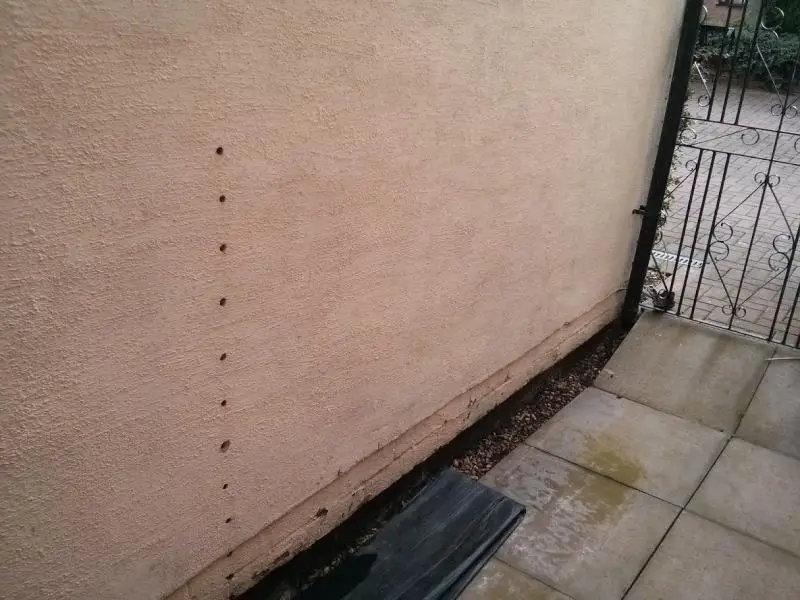Hi,
I've bought a 1930s property that had some damp on survey so the owner decided to have damp proofing done. (not sure I would have bothered myself as it clearly penetrating damp caused by chimney / loose tile and old rendering that needs replacing)
Having moved in I'm confused by what the company have had done. There are 4 x 15 mm holes drilled into the skirts in the upstairs bedroom that go as deep as the brickwork. I guess to ventilate the wall?
Externally there are 2 lots of 9 x 12 mm vertical holes going up to a height of about 4 feet about 5 feet apart which the damp guy has drilled . (pic attached - the second set of holes are just behind the down pipe) From sticking wire in these go back 5 - 6 inches with no resistance. ( I have 9" solid walls).
I would have expected these to be filled with damp cream and plugged, surely? And why are they going up instead of along...?
I've had a look at the guarantee that the previous owner has given me - I can't find any trace of the company online or on Yell but there is an 0800 number... I rang and asked the guy who answered if I could fill the holes, he was quite abrupt said I had to leave them 6 months first... he didn't answer with the company name either which was a bit odd.
any suggestions? Surely having holes would lead to more damp...? Or is it a case of ventilating the wall to allow it to dry out and I'm being too supicious?
thanks
I've bought a 1930s property that had some damp on survey so the owner decided to have damp proofing done. (not sure I would have bothered myself as it clearly penetrating damp caused by chimney / loose tile and old rendering that needs replacing)
Having moved in I'm confused by what the company have had done. There are 4 x 15 mm holes drilled into the skirts in the upstairs bedroom that go as deep as the brickwork. I guess to ventilate the wall?
Externally there are 2 lots of 9 x 12 mm vertical holes going up to a height of about 4 feet about 5 feet apart which the damp guy has drilled . (pic attached - the second set of holes are just behind the down pipe) From sticking wire in these go back 5 - 6 inches with no resistance. ( I have 9" solid walls).
I would have expected these to be filled with damp cream and plugged, surely? And why are they going up instead of along...?
I've had a look at the guarantee that the previous owner has given me - I can't find any trace of the company online or on Yell but there is an 0800 number... I rang and asked the guy who answered if I could fill the holes, he was quite abrupt said I had to leave them 6 months first... he didn't answer with the company name either which was a bit odd.
any suggestions? Surely having holes would lead to more damp...? Or is it a case of ventilating the wall to allow it to dry out and I'm being too supicious?
thanks



